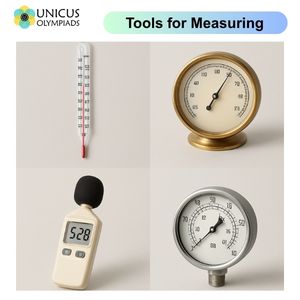

Various tools and instruments have been developed over time to measure essential physical properties like temperature, pressure, and sound. These tools are crucial in many scientific, industrial, and everyday applications. From weather forecasting to medical diagnoses, these instruments have revolutionized our understanding of the physical world. In this article, we’ll explore some of the most important tools for measuring these properties, along with the inventors who contributed to their development.

Temperature is one of the most commonly measured physical properties. Various instruments have been designed to measure temperature across different ranges, from freezing to boiling and beyond. These tools are crucial in fields ranging from meteorology to medicine.
Pressure measurement is crucial for understanding the behavior of gases and liquids, and it is widely used in scientific research, industry, and medicine. There are different types of pressure measurement tools for different applications, from atmospheric pressure to high-pressure systems in machines.
Sound is a form of energy that travels through mediums like air, water, or solid materials. Sound measurement tools are used in various fields, such as music, engineering, and medicine, to quantify sound levels and analyze acoustic properties.
Many of the tools that measure temperature, pressure, and sound were inspired by groundbreaking innovations in science and technology. Here are some more notable inventions and their inventors: